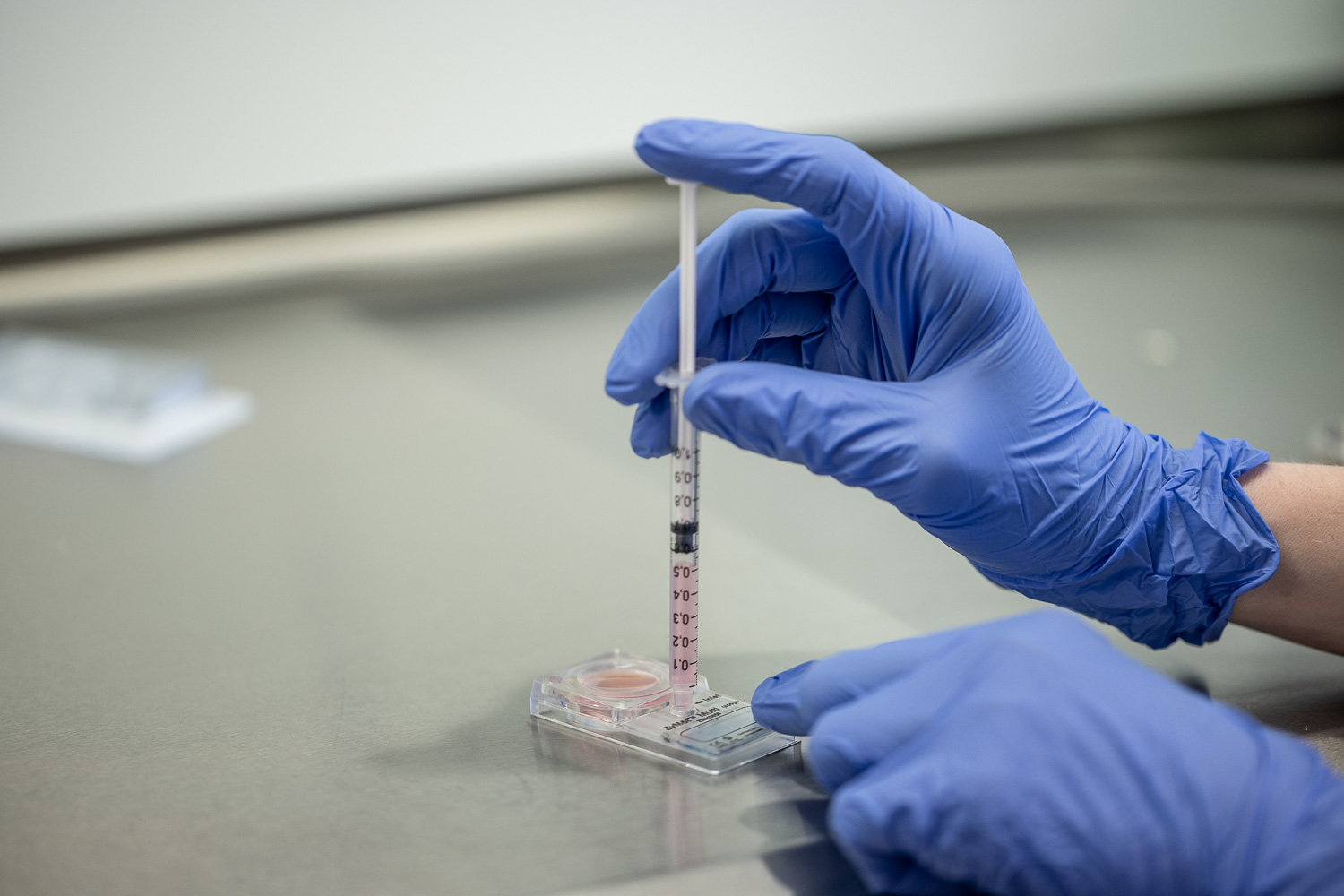Special laboratory methods
Microfluidic Sperm Sorting
Microfluidic Sperm Sorting is a method designed for the selection of functional sperm with low DNA fragmentation using a chip. The method is based on the principle of natural sperm selection by passing through microbarriers (micropores, microchannels) imitating the natural environment of the female reproductive system (fallopian tubes). Sorted sperm have better morphology, genetic quality and more than twice the viability and motility of unsorted sperm. The method demonstrably reduces the proportion of sperm with fragmented DNA and, in indicated cases, demonstrably increases the proportion of euploid embryos and the overall success rate of the cycle by up to 35%.
The Microfluidic Sperm Sorting method is also a gentle alternative to standard sperm processing, which does not require any previous treatment of the sperm sample and the use of devices that increase the oxidative stress of sperm.
When do we recommend this method?
- After recurring IUI failures
- In case of low rate of egg fertilization with ICSI in the previous cycle
- For recurring miscarriages
- After multiple embryo transfers without subsequent embryo implantation
- With poor embryo quality in previous IVF cycles
- In other cases depending on the advice of physician
How does the method work?
The chip has an inlet for the sample, which is linked to the outlet opening with a microfluidic duct. The untreated sperm sample is pipetted into the inlet where the present sperm must actively migrate in the outlet as well as through the above-mentioned micro-barriers. Sperm cells are sorted by separating healthy motile sperm in the outlet from poor-quality sperm captured in the duct.



